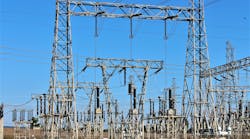A one-of-a-kind, high-tech modeling tool designed to simulate different situations on the electric power grid was on display at the White House. The result of a multi-year funding effort by the U.S. Department of Energy's Office of Electricity Delivery and Energy Reliability, Pacific Northwest National Laboratory researchers will join Energy Secretary Steven Chu to demonstrate how GridLAB-D can help power system operators, industry, innovators and entrepreneurs understand how making a change to one part of the power system impacts other parts of the grid.
"GridLAB-D provides first-of-its-kind analysis and simulation of all aspects of grid operations, from generation to consumption, in unprecedented detail. Using this open source, freely available tool, we can understand how making changes to one part of the electric system, such as incorporating more solar or wind power, impacts other parts of the system, and in different types of situations, such as inclement weather, record heat or even drought," said Carl Imhoff, PNNL's Electricity Infrastructure Market Sector lead. "In a sense, GridLAB-D lets users see the future of the grid like never before," he said.
The GridLAB-D research team joins other teams of researchers from government, industry and academia as part of "Datapalooza," an event sponsored by the White House Office of Science and Technology Policy, Council on Environmental Quality, the U.S. Department of Energy, and the U.S. Environmental Protection Agency. It's designed to showcase various ways in which data analysis can be used to improve the nation's power system. PNNL researchers will be demonstrating how GridLAB-D allows users to see how solar panels in various community scenarios can impact the performance of the power system. From there, utilities can understand what investments should be made to ensure the solar power can come online in a safe and effective manner.
How it works
The smart grid is often referred to as the merger of the Internet and the electric grid. It includes information technology that identifies how much power is being used. It also generates a lot of data, which must be analyzed in real time to enable optimal energy resource usage. GridLAB-D has been in development at PNNL for nearly 10 years and is made available as an open-source tool for utilities, universities, researchers, consultants, and government and defense agencies.
"GridLAB-D is a powerful tool capable of pulling together and simultaneously considering the effects of multiple technologies on the electric grid over periods of time that can range from seconds to decades," said David Chassin, project manager for GridLAB-D and a PNNL scientist. "It's a power systems simulator, market simulator, communication simulator and building simulator, all tied into one. Every piece shares information with every other piece to build a clearer picture of how the electric grid will evolve over time."
"For example, GridLAB-D allows us to drill down to see how changing prices or weather conditions impact voltage levels and communications loads on a minute-to-minute basis," said Chassin. "It has also been used to study whether different utility rate designs make sense when new demand response technology becomes more widely available."
Seeing solar at the White House
For the Datapalooza event, PNNL researchers are using GridLAB-D to simulate what would happen if a large numbers of solar panels were incorporated into a typical southern California distribution system. They worked with colleagues from PNNL's National Visualization and Analytics Center in Richland to develop an animation that shows what may occur as more homes and businesses install solar panels. The PNNL team used building design parameters for southern California and weather data from Bakersfield, California, to represent a typical southern, inland-California energy usage model, where utilities are currently experiencing a rapid rise in solar power on their systems.
"We've found that as clouds move through neighborhoods, the voltage can rise or fall outside allowable ranges, depending on conditions," said Kevin Schneider, a PNNL lead power engineer on the project. "Utilities may be required to manage voltage differently depending on how much solar power is found in various parts of their systems."
GridLAB-D is one component of PNNL's smart grid research and development program, under which researchers have been applying capabilities and expertise for more than 20 years to shape and deliver an electricity grid that is more resilient, secure and efficient.
Funding for GridLAB-D was provided by U.S. Department of Energy's Office of Electricity Delivery and Energy Reliability.

